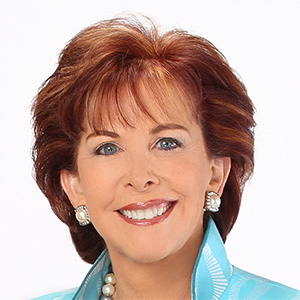Housing outlook for 2025: Stubborn mortgage rates, rebounding sales, and flat prices in most places
Published in Business News
Home sales across the country should rebound in 2025 after two sluggish years. But buyers shouldn’t count on 30-year mortgage rates dipping much below 6%. And homeowners in many parts of the country will be lucky to capture price gains above 2% next year, according to the National Association of Realtors.
Realtor.com, however, has named Colorado Springs, Colorado, as its top market for 2025 and places Denver in the 20th spot, based on an above-average rebound in the number of sales and price gains after two flat years. A lot of what happens, however, will depend on borrowing costs.
“Mortgage rates may not move all that much unless somehow we can address the national debt in the longer term perspective,” said Lawrence Yun, NAR chief economist during the group’s Real Estate Forecast Summit on Dec. 12. “As long as this debt situation hangs around, I think the mortgage rate new normal will probably be around 6%.”
In 2016, when President Donald Trump started his first term, the U.S. debt stood at $20 trillion, Yun said. It has now surpassed $35 trillion as he starts his second term and is up five-fold since 2000. With public debt so high, there is less private capital to invest in mortgages, keeping rates elevated.
The Federal Reserve has made three cuts to its key interest rate benchmark since September. Last week, the Fed’s policymakers indicated they would make fewer cuts next year.
“While short-term rates will be coming down, we don’t see long-term rates moving much,” said Mike Fratantoni, chief economist with the Mortgage Bankers Association on a call with Yun and other housing economists. “We think long-term rates will stay where they are today.”
He expects 30-year mortgage rates will end next year at around 6.5%, a major disappointment for would-be buyers looking to get a break when it comes to what they can afford.
Lower mortgage rates would permit more first-time buyers back into the market and there are a lot more homes listed than has been the case in the past few years. Yun predicts the median home price in the U.S. will rise 2% next year and 2% in 2026. But even those modest gains won’t improve affordability if mortgage rates remain stuck.
Yun said the housing market has endured a “couple of difficult years in transaction activity.” From July 2021 through September 2024, existing home sales moved lower on a year-over-year basis each month. In metro Denver and surrounding areas, about 20,000 fewer homes were sold year-to-date through November than in the same period in 2021, and 10,000 fewer than in 2022.
Nationally, home sales rose in October year-over-year, a long-awaited turn in the market. Yun forecasts existing home sales nationally could rise between 7% to 12% next year, and then another 10% to 15% in 2026. New home sales should rise 11% next year and then 8% in 2026, he said.
Danielle Hale, chief economist with Realtor.com, expects much weaker growth in home sales than Yun — only 1.5%. And she is calling for much stronger gains in median home prices nationally, 6%. She expects mortgage rates will fall enough to keep affordability level for buyers.
Homeowners have built a record $5 trillion in home equity since the onset of COVID-19 and delinquencies are near record lows. About four in 10 homeowners have no mortgage and many of those who do are sitting on very low rates. Although that “lock-in” effect is waning as time passes, it is keeping many people in place.
Tyrone Adams, president and CEO of the Colorado Association of Realtors, said as long as interest rates remain where they are, it will be hard to motivate owners with mortgage rates below 5% to sell.
“You will have to find a way to incentivize them to move,” he said. For most owners, the sluggish resale market hasn’t created a hardship.
By contrast, a quiet crisis continues among potential buyers. Renters are buying their first homes much later in life, at age 38, assuming they have a high enough income to make a purchase, said Jessica Lautz, deputy chief economist at the NAR. First-time buyers, who historically accounted for four in 10 home sales, now account for just under one in four.
The rate of rental households is growing at three times the pace of owning households, according to Redfin. For a variety of reasons, fewer Americans are relocating, choosing to settle down rather than moving to advance their prospects, which contributes to a less dynamic housing market, not to mention society, Yun said.
NAR’s top housing hotspots for 2025, a list includes Boston; Indianapolis; Phoenix; Grand Rapids, Michigan; Charlotte, North Carolina; and Kansas City, Missouri, among others.
©2024 MediaNews Group, Inc. Visit at denverpost.com. Distributed by Tribune Content Agency, LLC.












Comments